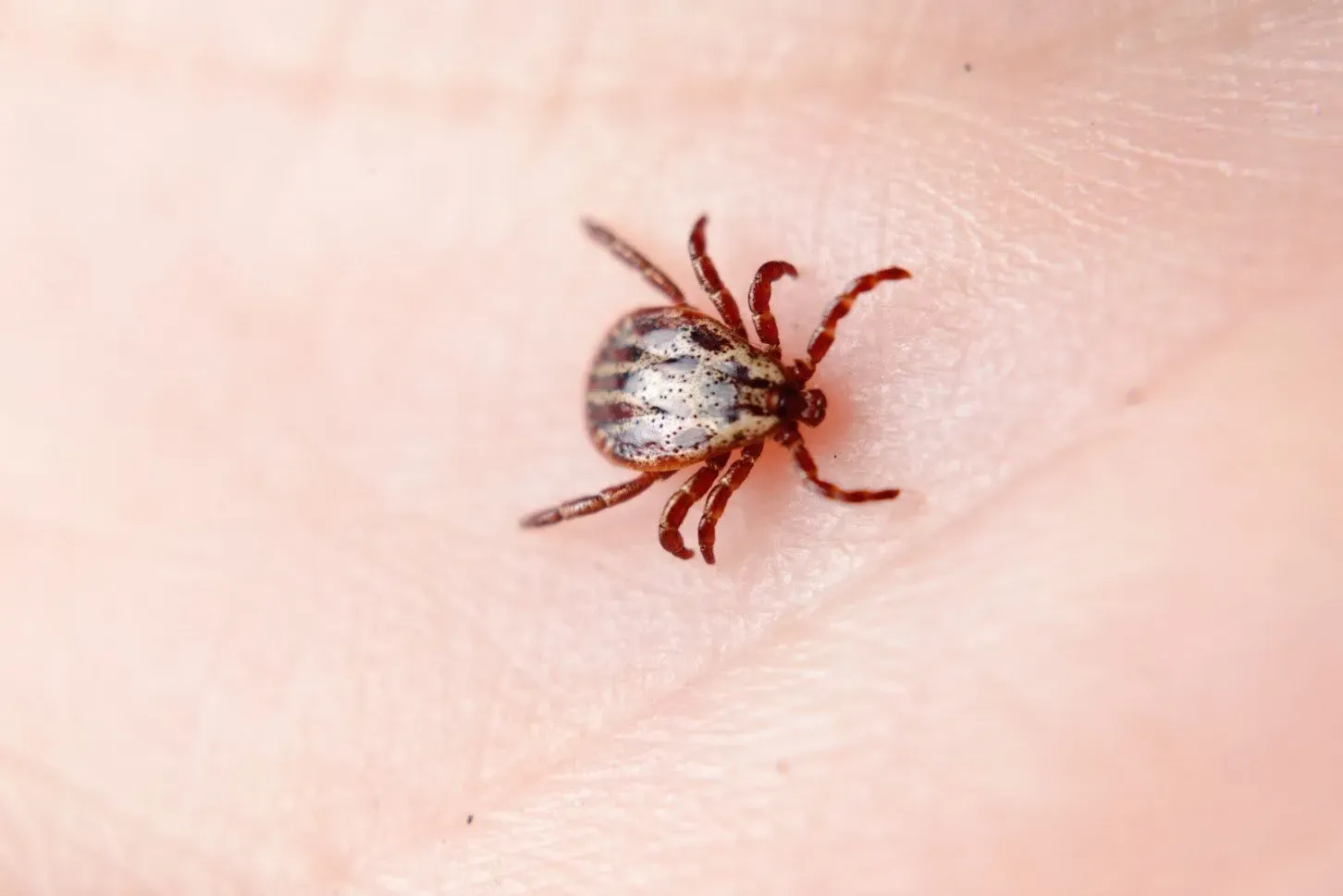Home Tick Infestations: Hazards, Prevention, and Signs

Everyone who lives in the state of Minnesota should learn about ticks, including the diseases they can carry and the ways to prevent home tick infestations. Minnesota is one of the top 10 states in the country for tick-borne illnesses, and, according to the Minnesota Department of Health, the number of Lyme disease diagnoses in the state has risen in recent years.
While a tick can transmit disease to you or a loved one outside of your home, the chance of catching a tick-borne illness increases when your home is infested with these pests.
Learn more about a few of the most common tick-borne diseases, the ways to prevent a home tick infestation, and what the signs are that your home already has a tick infestation that needs controlling.
Common Tick-Borne Diseases
While there are many tick-borne illnesses, two of the most common include Lyme disease and Rocky Mountain Spotted Fever.
Lyme Disease
Lyme disease can develop when a deer tick or black-legged tick infects a human with a bacteria called Borrelia burgdorferi. Typically, an infected tick must remain on the skin for at least 36 hours to transmit this disease.
While some people develop Lyme disease symptoms immediately after being infected, others do not develop symptoms for several months or even years after being bit by an infected tick. Symptoms of Lyme disease can vary from person to person, but about 89 percent of all infected children develop a rash at the infection site. Other initial disease symptoms include joint pain and swelling, fever, difficulty concentrating, and muscle aches.
While this disease is treatable with antibiotics that kill the Borrelia burgdorferi bacteria, Lyme disease that goes untreated can cause heart and neurological problems along with several serious brain disorders.
Rocky Mountain Spotted Fever
Rocky Mountain spotted fever (RMSF) is another potentially deadly illness from several tick species that can transmit a bacteria called Rickettsia rickettsii to humans they bite. The symptoms of this illness mimic the symptoms of the common flu and typically begin about two to 14 days after being infected by a tick. A few of these symptoms include a high fever, nausea, vomiting, fatigue, and muscle aches.
These symptoms are often accompanied by a telltale RMSF rash that consists of small red dots on hands, feet, and ankles that can quickly spread to other areas of the body.
When diagnosed in its early stages, this illness is often treatable with antibiotics. However, when left untreated, RMSF can lead to potentially deadly inflammation and damage of internal organs.
Home Tick Infestation Prevention
A home tick infestation can begin after just one tick enters your home. A female tick can lay between 2,000 and 18,000 eggs inside of your home to quickly begin an infestation.
For this reason, examine family members’ and pets’ bodies for ticks after they spend any time in an area that may have ticks, such as a wooded area, and remove any ticks that you find. Ticks often attach themselves to the skin around the groin and inside of the ears, as well as on more exposed areas of the body and hair.
Also, consider applying an insect repellent to all family members before they enter an area that may have ticks to repel ticks that could get inside of the house. In addition, have all family members wear light-colored clothing when in tick-ridden locations; ticks are often easier to spot on light-colored clothing.
While treating pets with tick repellents can help keep ticks from latching onto their skin, you should still examine pets' hair and skin for ticks before they enter your home.
Finally, keep the grass on your lawn short to keep ticks from lingering in your yard where they can get into the home, as ticks enjoy hiding out in long grass.
Home Tick Infestation Signs
Many homeowners overlook ticks and eggs hiding out in their homes due to their small sizes. However, ticks tend to lay their eggs around windows and doors, on wall baseboards, underneath furniture, and near the edges of carpets and rugs.
The most common telltale sign of a home tick infestation is the regular presence of ticks on the skin of family members and pets when they did not recently spend time outdoors. In addition, when your home is infested with the pests, you may often find ticks inside of your vacuum cleaner bag or canister.
Tick Infestation Eradication
Since ticks can carry potentially deadly diseases, contact a professional pest control company at the first sign of a home tick infestation.
These experts will locate the areas of your home where ticks breed and eradicate tick eggs before they hatch. In addition, they will take steps to kill and remove adult ticks from your home.
Finally, your pest control expert will help determine if any areas of your yard may provide a safe haven for ticks to hide out.
If you suspect that you may have a home tick infestation, then contact the experienced pest control professionals at Paffy's Pest Control for expert tick control services today.
CONTACT INFORMATION
Metro: 651-459-4654
Address: 479 Hayward Ave. N. Oakdale, MN. 55128
Alexandria: 320-815-9725
Address: 9046 Co Rd 28 Alexandria MN 56308
SE Minnesota: 507-291-5432
Western Wisconsin: 715-869-1660
Email: paffyspestcontrol@gmail.com
BUSINESS HOURS
- Mon - Fri
- -
- Sat - Sun
- Closed
Open Saturdays from May to Early October 8 a.m. – 12 p.m.







